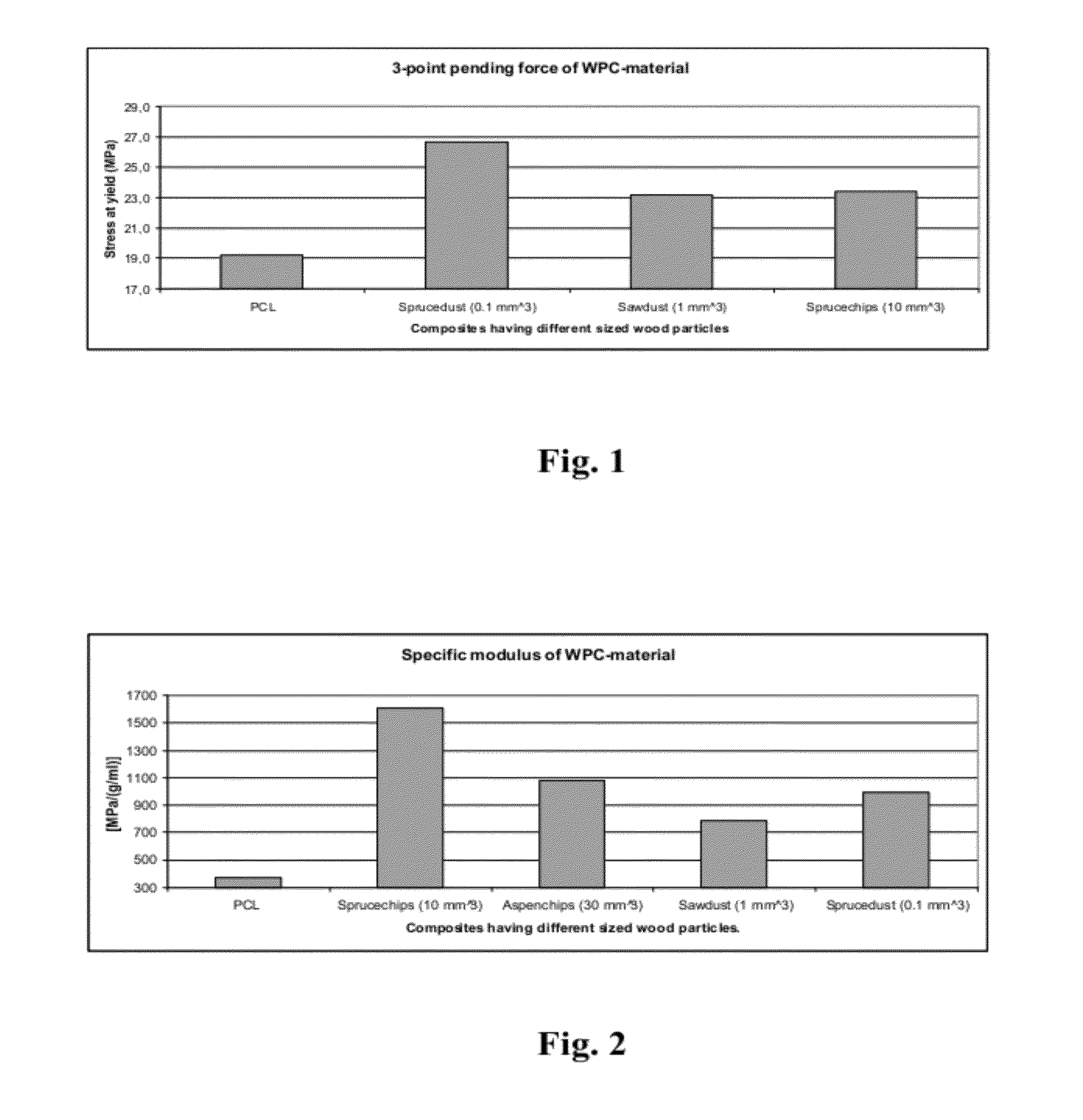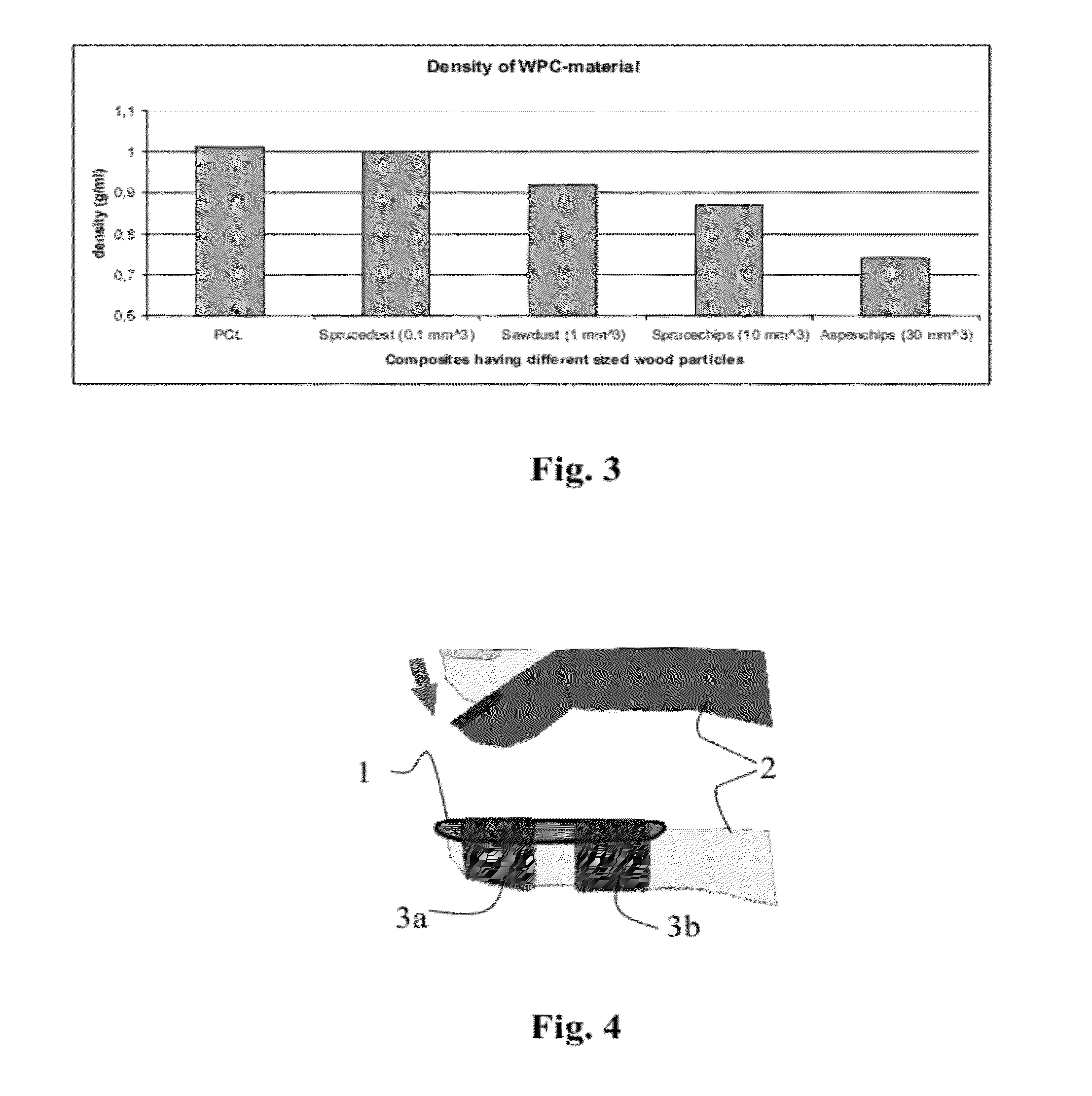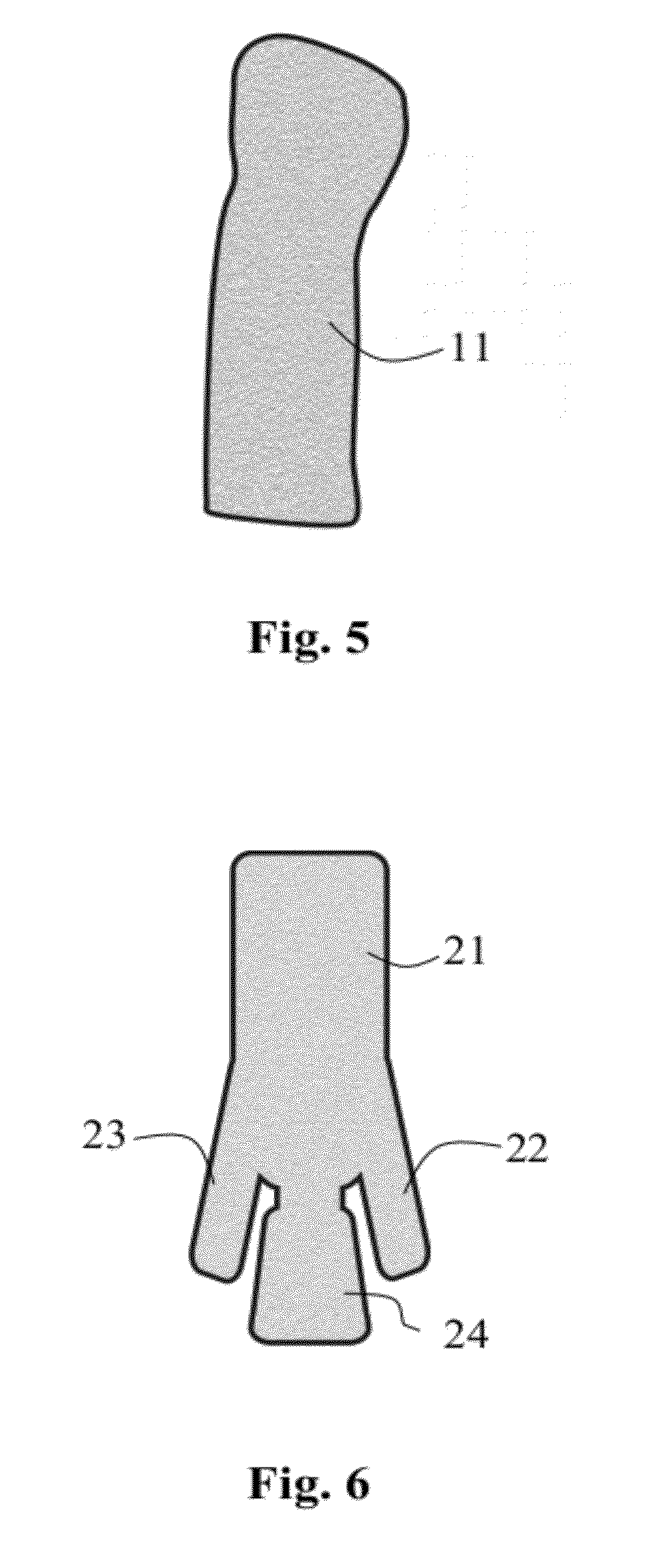Novel composite materials comprising a thermoplastic matrix polymer and wood particles
a thermoplastic matrix polymer and composite material technology, applied in the field of polymer materials, can solve the problems of long setting time, low strength and relative heaviness, messy application,
- Summary
- Abstract
- Description
- Claims
- Application Information
AI Technical Summary
Benefits of technology
Problems solved by technology
Method used
Image
Examples
example 1
[0125]78 grams of the commercially available PCL with a molecular weight in the range of approximately 120-150 000 g / mol and 22 grams of cubic sawmill spruce chips of average dimensions 2.4×2.7×1.9 mm were mixed and poured on a release paper and heated in oven at 100 degrees for approximately 60 minutes. After melting of polymer was observed, the wood-PCL mixture was removed from oven and folded to shape of a thick plate (thickness 4-5 mm). After solidifying, the composite plate was placed back to the oven and allowed to re-melt. The melting and shaping cycle was repeated until a homogenous distribution of components was achieved.
example 2
[0126]85 g of ε-polycaprolactone CAPA 6800 and 4 g of large aspen chips with average dimensions of 4.8×5.6×1.2 mm were melted to a wood-PCL composite according to preparation method in Example 1. A light-weight composite plate with optimum flexibility and rigidity for orthopaedic casts was received.
example 3
[0127]77 g of ε-polycaprolactone CARA 6800 and 33 g of fine sawdust of mixed wood qualities (spruce, pine and birch) were melted and mixed according to preparation method described in Example 1 to achieve desired wood-PCL composite.
PUM
| Property | Measurement | Unit |
|---|---|---|
| size | aaaaa | aaaaa |
| volume | aaaaa | aaaaa |
| temperature | aaaaa | aaaaa |
Abstract
Description
Claims
Application Information
 Login to View More
Login to View More - R&D
- Intellectual Property
- Life Sciences
- Materials
- Tech Scout
- Unparalleled Data Quality
- Higher Quality Content
- 60% Fewer Hallucinations
Browse by: Latest US Patents, China's latest patents, Technical Efficacy Thesaurus, Application Domain, Technology Topic, Popular Technical Reports.
© 2025 PatSnap. All rights reserved.Legal|Privacy policy|Modern Slavery Act Transparency Statement|Sitemap|About US| Contact US: help@patsnap.com



